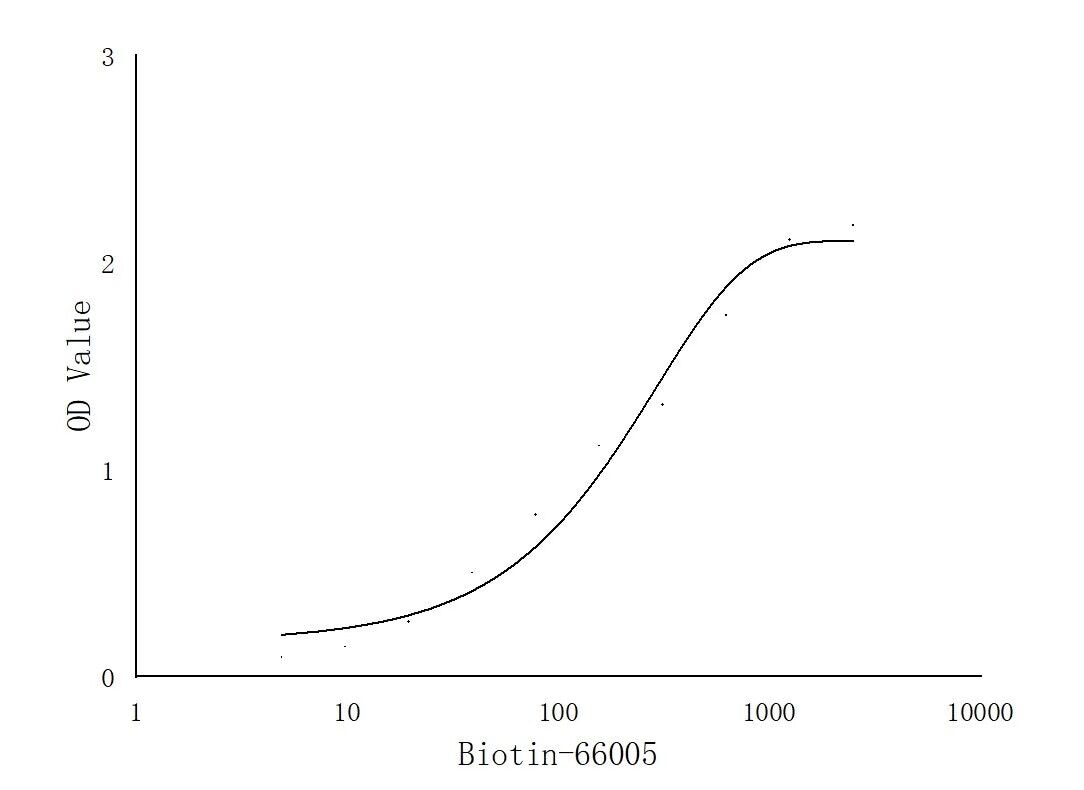Tested Applications
| Positive ELISA detected in | Recombinant protein |
Recommended dilution
| Application | Dilution |
|---|---|
| Enzyme-linked Immunosorbent Assay (ELISA) | ELISA : 1:5000-1:50000 |
| It is recommended that this reagent should be titrated in each testing system to obtain optimal results. | |
| Sample-dependent, Check data in validation data gallery. | |
Product Information
Biotin-66005 targets 6*His, His-Tag in ELISA applications and shows reactivity with recombinant protein samples.
| Tested Reactivity | recombinant protein |
| Host / Isotype | Mouse / IgG1 |
| Class | Monoclonal |
| Type | Antibody |
| Immunogen |
Peptide Predict reactive species |
| Full Name | 6*His, His-Tag |
| Calculated Molecular Weight | 0.84 kDa |
| Gene Symbol | |
| Gene ID (NCBI) | |
| RRID | AB_2923721 |
| Conjugate | Biotin |
| Form | Liquid |
| Purification Method | Protein G purification |
| UNIPROT ID | HISTAG |
| Storage Buffer | PBS with 50% glycerol, 0.05% Proclin300, 0.5% BSA, pH 7.3. |
| Storage Conditions | Store at -20°C. Avoid exposure to light. Stable for one year after shipment. Aliquoting is unnecessary for -20oC storage. |
Background Information
Protein tags are protein or peptide sequences located either on the C- or N- terminal of the target protein, which facilitates one or several of the following characteristics: solubility, detection, purification, localization and expression. His-tag is often used for affinity purification and binding assays. Expressed His-tagged proteins can be purified and detected easily because the string of histidine residues binds to several types of immobilized metal ions, including nickel, cobalt and copper, under specific buffer conditions. The His-tag antibody is a useful tool for monitoring of the His-tagged proteins, and recognizes His-tags placed at N-terminal, C-terminal, and internal regions of fusion proteins expressed in bacteria, insect, and mammalian cells.




